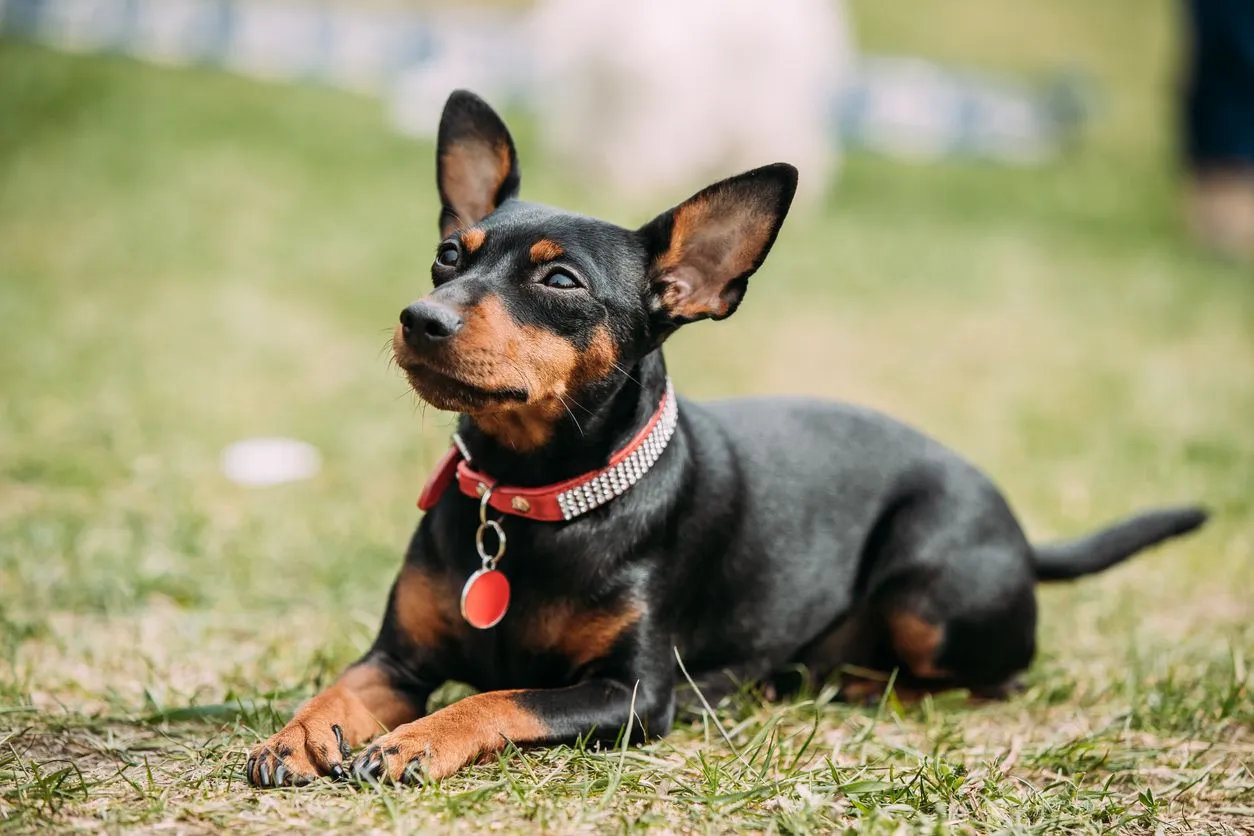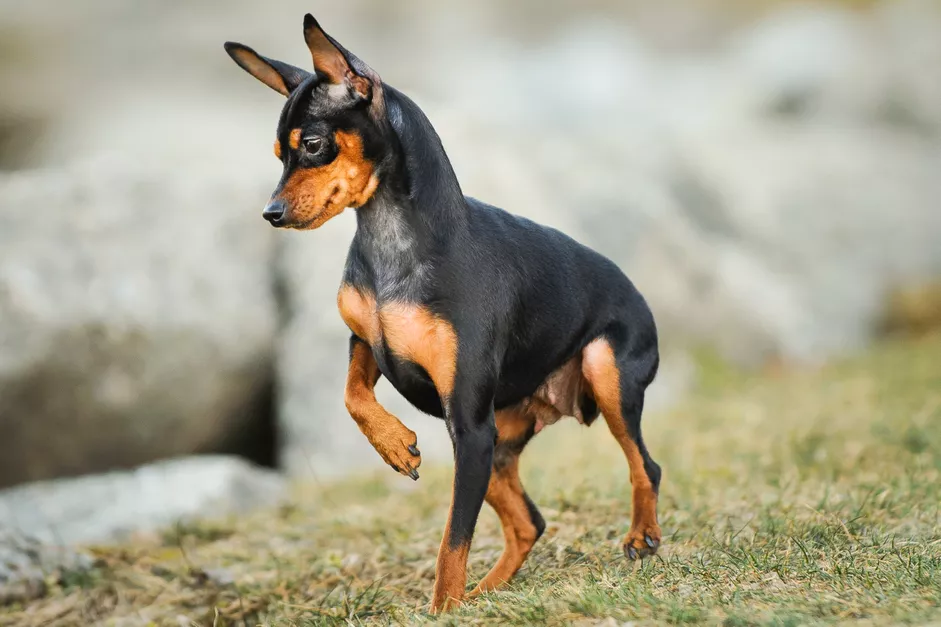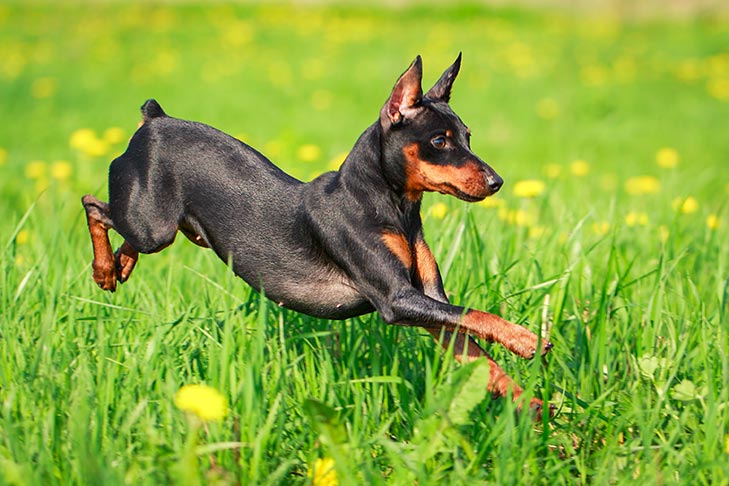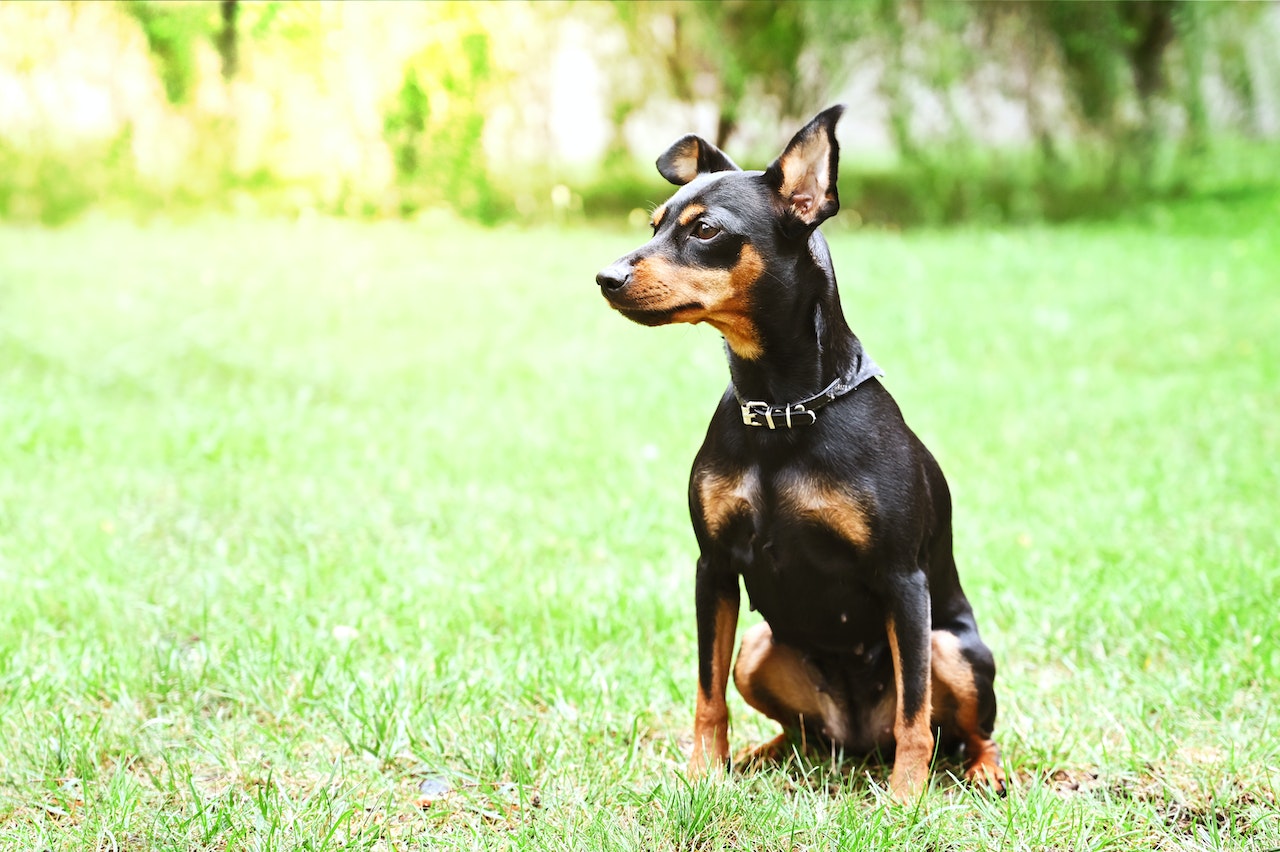
Miniature Pinschers are a German toy dog breed that looks similar to the Doberman. They have pointed ears, long noses, and short, shiny coats. These small dogs still have a strong personalities and are lovable.
Min Pin, affectionately known as the “King Of Toys”, is a loyal, intelligent breed with a stubborn streak. This breed is small but athletic despite its size. The breed is known for its “hackney gait”, which is similar to a horse’s trot. The Min Pin lifts its front feet and extends them outward with a bend at its wrist. However, unlike horses, it only trots using its front legs. This breed is a wonderful companion for active families due to its elegant appearance.
Overview of Breeds
- GROUP: Toy
- HEIGHT 10 to 12.5 Inches
- WEIGHT8-10 Pounds
- COAT Short, shiny fur
- COAT COOR: Solid, stag, and black (red with some dark hairs), chocolate with rust marks, and black with rust markings
- LIFE SPAN 12-16 years
- TEMPERAMENT: Active, playful, intelligent, protective, brave
- HYPOALLERGENIC No
- ORIGIN Germany
The Miniature Pinscher’s Characteristics

This breed is bold and fearless. The Miniature Pinscher is a watchdog breed. Their history as rat hunters means that they are skilled at catching small animals. They should be monitored closely in homes with such pets. The Min Pin is a playful companion who loves to spend time with its owners.
Min Pins are able to get along with other animals and children if they are socialized well. Min Pins are smaller than dogs of medium size and can be more susceptible to injury. They may bite or growl if handled incorrectly. If your Min Pin is properly introduced to cats and dogs, they should be friendly.
| Affection Level | Medium |
| Friendliness | High |
| Kid-Friendly | Medium |
| Pet-Friendly | Medium |
| Exercise Needs | High |
| Playfulness | High |
| Energy Level | High |
| Training | Medium |
| Intelligence | High |
| Tendency To Bark | High |
| Shedding | Low |
The Miniature Pinscher: A History
The Miniature Pinscher was born in Germany. Its origins date back many hundred years when it hunted rats on farms. Because of its resemblance to small deer that once lived in Germany’s forests, it was originally called the Reh Pinscher.
The breed is believed to have descended from the German Standard Pinscher. However, the Min Pin is not a Doberman-bred version. Min Pins could also have been ancestors of Dachshunds or Italian Greyhounds.
German breeders founded the Pinscher Klub in 1895. Later, the Pinscher-Schnauzer Klub was renamed and the first breed standard was created. In 1900, Min Pins were first displayed at the Stuttgart Dog Show.
The popularity of the Min Pin in Germany increased between 1905 and World War I. Breeders from Germany and Scandinavia worked hard to improve the genetic line after World War I. The first Miniature Pinschers arrived in the United States around 1919. At first, only a handful of Miniature Pinschers were allowed to be shown at American Kennel Club (AKC), dog shows. The Miniature Pinscher Club of America was founded in 1929. The Min Pin was officially registered with the AKC in 1925. Their popularity has remained constant over the years.
Miniature Pinscher Care


Miniature Pinschers can be very active and need a lot of training in order to be good companions. However, with proper care, they can make great pets for many families. They don’t need much other than standard grooming due to their short coats.
Exercise
The Min Pin is a loving companion dog, but they are not suitable for lap dogs. Min Pins thrive in an active, but attentive home. Min Pins are active dogs and need to be exercised regularly to keep them healthy. This breed needs to be engaged in play, walking, and other activities every day for at least 45 minutes to an hour. It is important to keep your Min Pin’s mind stimulated, as they can easily become bored. You can play hide-and-seek or fetch with your dog to keep it entertained and stimulated.
Grooming
Min Pin may have cropped ears and a tail that may be docked. The Min Pin’s coat is very smooth and shiny. It needs only minimal grooming. To maintain a healthy appearance, brush your dog’s hair weekly or daily. Although these dogs shed very little, owners should still maintain regular care such as trimming nails and brushing teeth.
Training
Proper training is essential for this breed. You can start with basic obedience lessons as soon as your puppies turn eight weeks old. The Min Pin is intelligent and responds well to training. The breed can be stubborn and unpredictable if it is not properly trained. The Min Pin is a charming and entertaining dog.
Min Pins are a lively and energetic companion that will make a great addition to any home. Min Pins can be socialized well and may get along with children if they are raised together. Min Pins can also enjoy agility training, which is a fun and rewarding activity that helps them exercise their mind and bodies together.
Common Health Problems


Miniature Pinschers, like other purebred dogs, can suffer from genetic health issues. Responsible breeders aim to uphold the highest breed standards, as set by kennel clubs such as the AKC. These breed standards have a lower chance of dogs developing hereditary disorders. Ask your breeder for the medical history of your Miniature Pinscher puppy.
There are some hereditary health issues that can affect the breed.
- Luxating Patella – This condition can cause your dog’s knees to pop out of their place. Your veterinarian may recommend surgery in severe cases.
- Legg Calve-Perthes Disease: This orthopedic disorder can lead to degeneration of the hip joints and may need corrective surgery.
- Progressive retina atrophy (PRA): This condition affects the retina of your dog’s eyes and eventually causes blindness.
Diet and nutrition
An active, growing Min Pin puppy needs one ounce of high-quality dog food each day. This can be spread over three to four meals. Adults can consume one to two meals per day (about half a pound per pound of their body weight), on the other side. For active dogs, clean water should always be available.
Young adults and puppies who exercise regularly may be able to benefit from a diet high in protein. Older dogs and those with less activity may require a diet that is higher in fiber and lower in fat. To prevent obesity in your dog, you should monitor his weight and reduce the number of treats he gets.
Your veterinarian will help you determine the best diet for your dog based on his age, weight, activity level and any allergies.
Places to Adopt or Purchase a Miniature Pinscher



Talk to Min Pin owners, breeders who are reputable, and rescue groups before you adopt a Miniature Pinscher. Your local shelter is the best place to begin your search. You can also find breed-specific rescues and shelters that may have Min Pins or other dogs that could be a great addition to your family.
It is important to research before you adopt a puppy from a breeder. A responsible breeder will be able to provide the litter’s medical history and allow potential adopters to meet their parents. Min Pin puppies are typically priced between $1,000 and $2,000 but may cost more or less depending on availability and the litter’s pedigree.
Miniature Pinscher Overview
Pros
- They are small in size, but great companions for travel and apartments.
- Lively, fun temperament
- The grooming that is low-maintenance
Cons
- Barking is a common problem
- Be wary of strangers. Aggressiveness can be a problem.
- Small children can make you feel unsafe
FAQ
Are Mini Pinschers Good Family Dogs?
Miniature pinschers are lively, friendly little dogs who can be a great addition to many families. This breed is best for families with older children or who enjoy spending time with their dogs.
Are Miniature Pinschers aggressive?
Although Miniature Pinschers do not have an aggressive nature, they can be very impulsive and chase small animals. If not properly trained, this breed can become aggressive around children and strangers. Children in the home should learn to respect the space of the dog and how to interact with it safely.
Is a Miniature Pinscher a Doberman or a Miniature Pinscher?
Although the two breeds are very similar, Miniature Pinschers don’t descend from Dobermans. Min Pins have been around for longer. It is believed that these two German dogs are descendants of the German Pinscher, along with a mixture of other breeds.